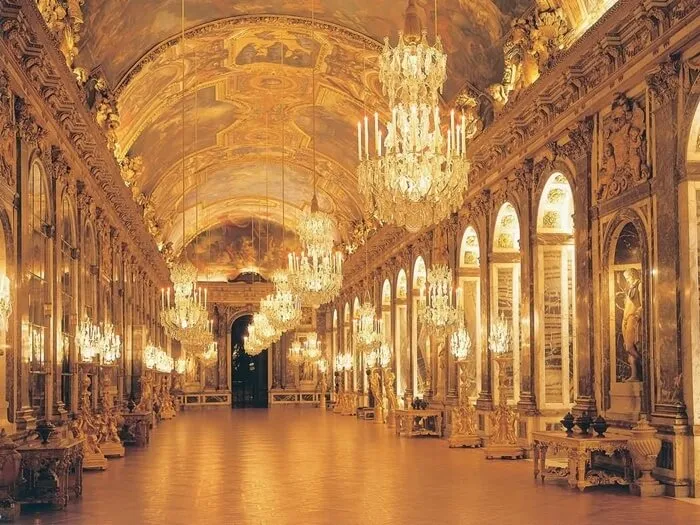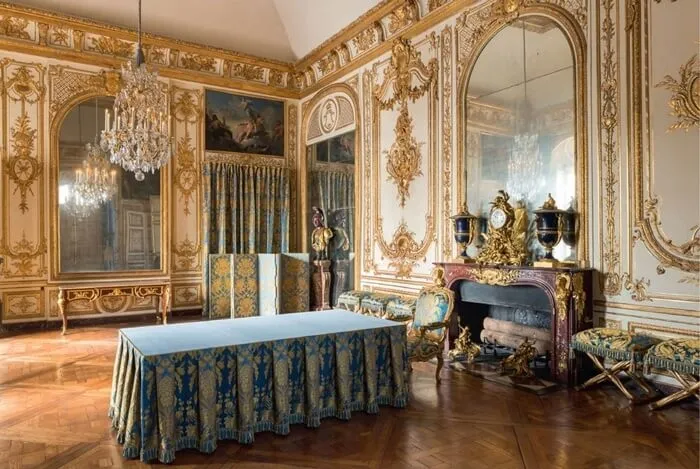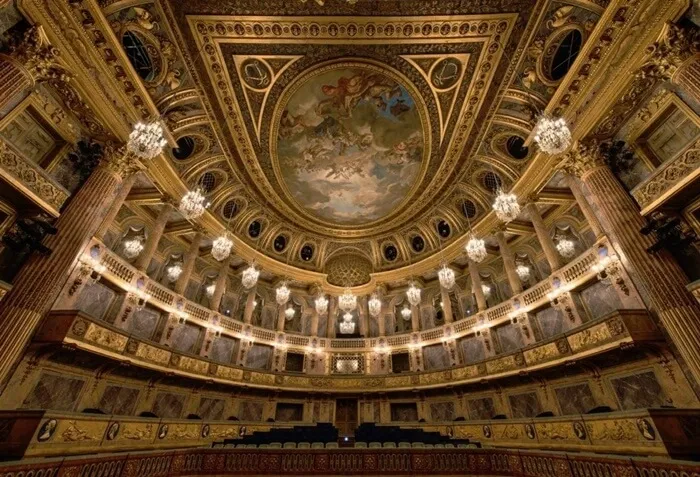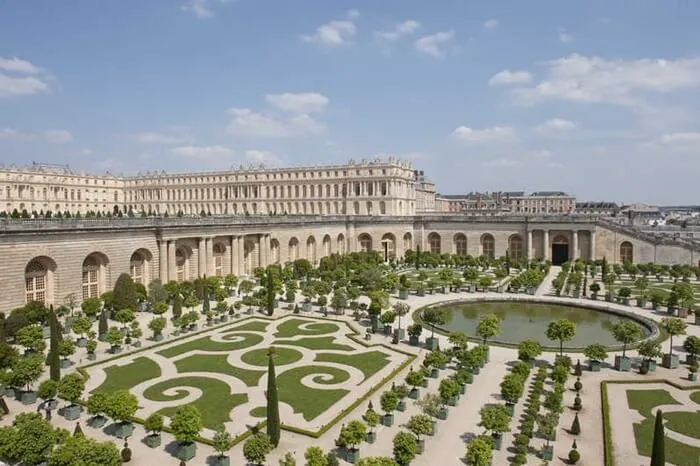France, the cradle of European culture and art, is renowned for its magnificent architectural wonders, especially its royal palaces. These grand structures are not merely residences of kings and queens; they stand as symbols of power, wealth, and the sophisticated aesthetic tastes of historical dynasties. Join “Travel Around the World” as we explore the most beautiful royal palaces in France, where fascinating historical tales and unique architecture await.
Versailles, Fontainebleau, Compiègne… each palace is a treasure reflecting the evolving history and architectural styles of different eras. From the opulent splendor of Versailles to the timeless charm of Fontainebleau, let’s delve into the secrets behind their majestic walls, grand gardens, and priceless art pieces.
Palace of Versailles: The Symbol of Power and Wealth
When mentioning the most beautiful royal palaces in France, the Palace of Versailles undoubtedly tops the list. Located in the outskirts of Paris, Versailles symbolizes the power and wealth of French dynasties and is one of the most popular tourist destinations in the world. Approximately 5 million visitors flock to Versailles annually to admire its grandeur and learn about its storied history.
Commissioned by King Louis XIV in 1682, the palace served as the residence of several French monarchs, including Louis XIII, Louis XIV, Louis XV, and Louis XVI. Covering an area of approximately 67,000 m², boasting over 2,000 rooms, and surrounded by an 815-hectare park, Versailles stands as one of the largest and most lavish palaces globally. In 1979, UNESCO designated it as a World Heritage Site.

Magnificent Architecture and Lavish Interior
The architecture of Versailles harmoniously blends Baroque and Classicism styles, embodying the opulence and authority of the French monarchy. Every room and corridor is meticulously decorated with ornate designs and luxurious furnishings.
The Hall of Mirrors is the most famous room in Versailles. Stretching 73 meters, the grand hall features 17 massive mirrored arches facing 17 large windows overlooking the gardens. This space was a daily passageway for the king to the Royal Chapel and hosted the signing of the Treaty of Versailles in June 1919, officially ending World War I.

The Mercury Salon is one of seven decadent rooms in the royal suite, notable for its striking crimson theme. Originally a bedroom furnished with silver fixtures, it later became a gaming room, and today it serves as a gallery.
The Royal Opera House was constructed over nearly two decades but completed in just two years in time for King Louis XVI and Marie Antoinette’s wedding celebration. The grand opera hall was only used about 40 times before the fall of the French monarchy, partly due to its staggering operating costs (it required 3,000 candles to light the space for a single night).

The Council Chamber is where the king made pivotal decisions for the nation between 1682 and 1789. In this room, the monarch sat in a central velvet armchair flanked by royal council members, under tight security to prevent leaks of sensitive information.

Stunning Royal Gardens
The Palace of Versailles is famed not only for its architectural grandeur but also for its breathtaking royal gardens. The sprawling gardens feature 55 water basins, 50 fountains, and hundreds of sculptures scattered throughout. The Latona Fountain, the largest of all, built in 1662, is crowned by a statue of the goddess Apollo. All other fountains in the palace are connected to Latona as their water source.

Architect Jules Hardouin-Mansart designed the unique gardens with thousands of trees, some over 200 years old. In winter, the trees are sheltered indoors, while in summer, they are arranged geometrically throughout the grounds. Many trees originate from Italy, Spain, and Portugal, gifted to King Louis XIV as tokens of admiration and respect.
The Royal Chapel: A Sacred Monument
The Royal Chapel, towering 40 meters high with a stunning stone facade and grand windows, is a sacred architectural masterpiece of Versailles. Elevated above surrounding buildings, the chapel symbolizes the king’s divine authority and pivotal role in religious and national matters.
Palace of Fontainebleau: Timeless Beauty and Heritage
Alongside Versailles, the Palace of Fontainebleau is one of France’s most stunning royal residences. Situated about 55 km southeast of Paris, Fontainebleau is among the oldest royal dwellings in France, with a rich history spanning over eight centuries.
Fontainebleau is not merely a palace; it is a sprawling architectural complex featuring numerous buildings, courtyards, and gardens constructed across various historical periods. The palace bears witness to many significant events in French history, from the Medieval era to the French Revolution and Napoleon’s reign.
Fusion of Architectural Styles
Fontainebleau exemplifies the fusion of diverse architectural styles, from Gothic influences of the Middle Ages to Renaissance and Baroque designs. This diversity reflects the palace’s long history and evolution under different monarchs.
One highlight is the Ballroom, an opulent space adorned with murals, intricately carved ceilings, and finely crafted wooden flooring. The ballroom was a venue for royal galas and important court events.
English-Style Garden
Fontainebleau’s gardens attract visitors with their blend of French formal aesthetics and English countryside charm. Featuring lush green lawns, neatly trimmed hedges, serene ponds, and elegant fountains, the gardens offer a peaceful retreat within the palace grounds.
Palace of Compiègne: A Fusion of History and Art
The Palace of Compiègne, located north of Paris, is another royal gem celebrated for its Neoclassical architecture and historical significance tied to French monarchs. Compiègne served as a cherished residence for King Louis XV and later Napoleon Bonaparte.
The palace houses an impressive collection of art, including paintings, sculptures, furniture, and decorative artifacts. Additionally, Compiègne boasts a sprawling garden and a carriage museum displaying ornate royal coaches used by French nobility.
Conclusion
The most beautiful royal palaces in France are not merely magnificent architectural structures; they are the guardians of history, treasure troves of art, and symbols of culture. These destinations captivate those eager to explore France’s rich heritage, stunning architecture, and artistic legacy.
If you have the chance to visit France, don’t miss the opportunity to explore these royal palaces. Their beauty and the intriguing stories behind their walls promise an unforgettable and meaningful travel experience.
Which palace impressed you the most from this list? Share your thoughts with “Travel Around the World”!